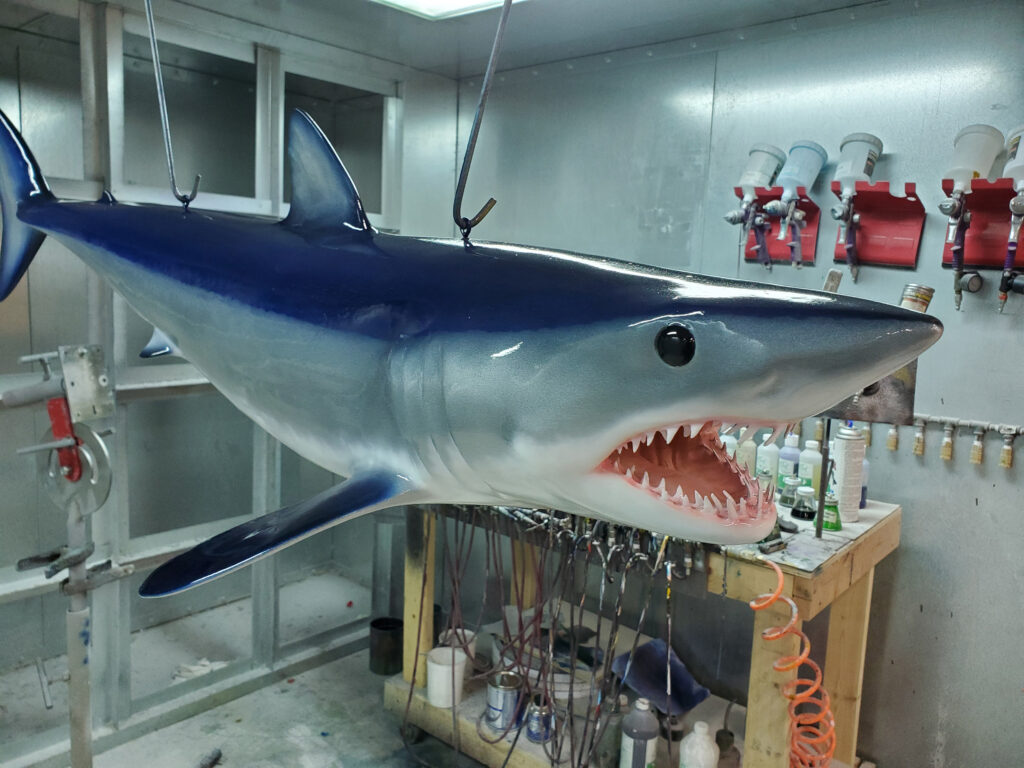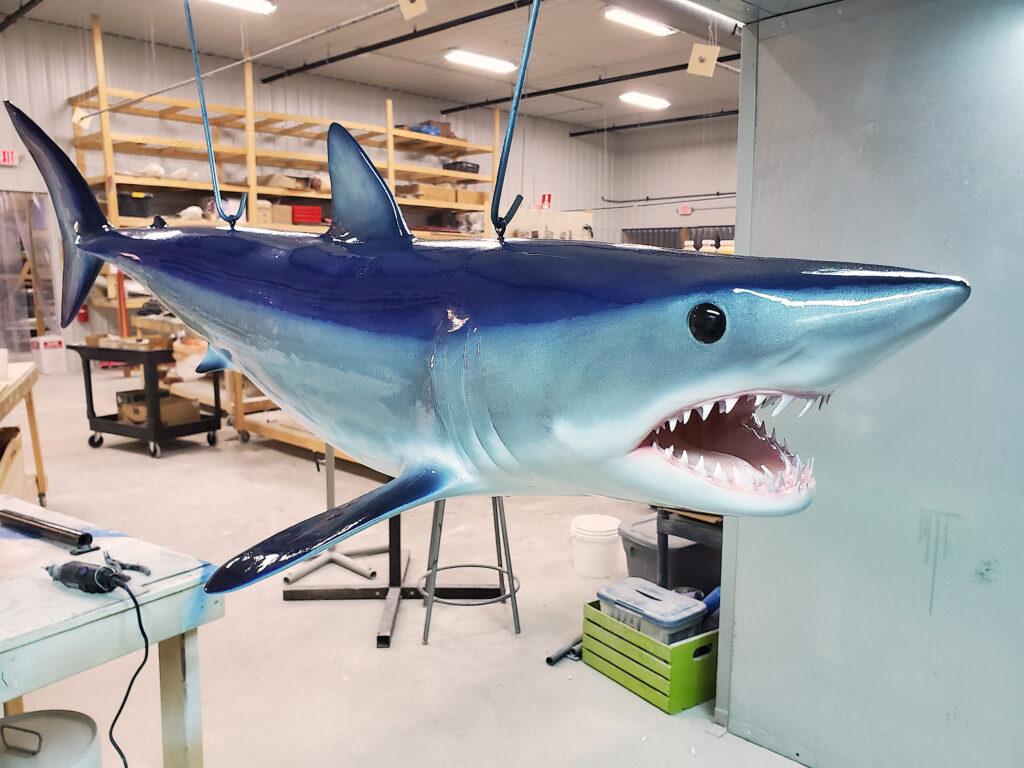SHORTFIN MAKO SHARK
Isurus oxyrinchus
The mako shark gets its name from the Māori language meaning ‘man eater’. Despite the scary name, there are few recorded attacks and most of them have been provoked through harassment or on hook and line. They are known for their incredible speed and powerful bite.
The mako is one of the larger sharks found in the ocean with the females being larger than the males (sexually dimorphic). They are found in temperate and tropical waters worldwide and are closely related to the longfin mako shark.
The shortfin mako is a pelagic species that spends most of its time on the surface down to depths of roughly 490 ft. They are one of the few sharks known to be endothermic, maintaining a body temperature higher than their environment. This makes them amazing hunters and gives them an edge over their prey in cooler waters. They are known to travel long distances in search of food and tend to stay offshore. With a higher metabolism than most sharks they consume about 3% of their weight daily and take about 1.5 to 2 days to digest a full meal.
Shortfin makos feed mainly upon cephalopods and bony fish such as mackerels, tunas, bonitos, and swordfish. As the sharks get bigger, their diet can also include other sharks, porpoises, seabirds, and sea turtles. Shortfin mako sharks over 9ft have interior teeth considerably wider and flatter than smaller mako, which enables them to hunt and feed upon dolphins, swordfish, and other sharks.
They are incredible hunters and can sneak up on their prey out of nowhere! The dark colors on their back and their white bellies allow them to blend into the deep, blue open ocean. They come from below and attack their prey before they even know what hit them!
New research has shown that humans underestimated the longevity and age of the mako shark. It was once thought that the mako reached sexual maturity between 4 to 6 years of age. We now know that the maximum age of a male is 29 years old, and a female is 32 years. A male reaches sexual maturity around 8 years and a female around 18 years.
Of all studied sharks, the shortfin mako has one of the largest brain to body ratio and are fast learners. Unlike great white sharks, the mako does no rely on electroreception when hunting and relies mainly on smell, hearing, and most of all, their vision.
Their intelligence, speed and beauty make them popular among sportfishermen. As one of the fastest species in the ocean, they put on quite a performance, with acrobatic flips, long runs and a incredible stamina.
Also known as the blue pointer or bonito shark, the mako is classified as Endangered by the International Union for Conservation of Nature (IUCN). It is because of this, most sportfishermen practice catch and release.





